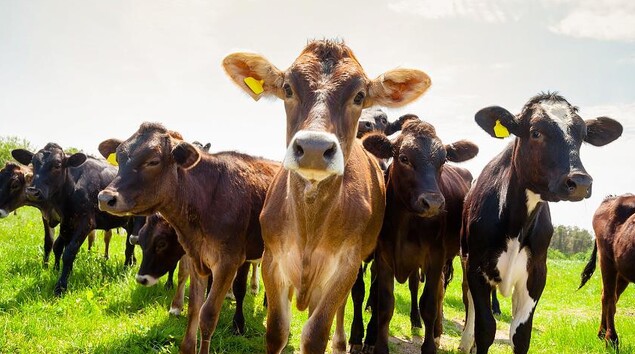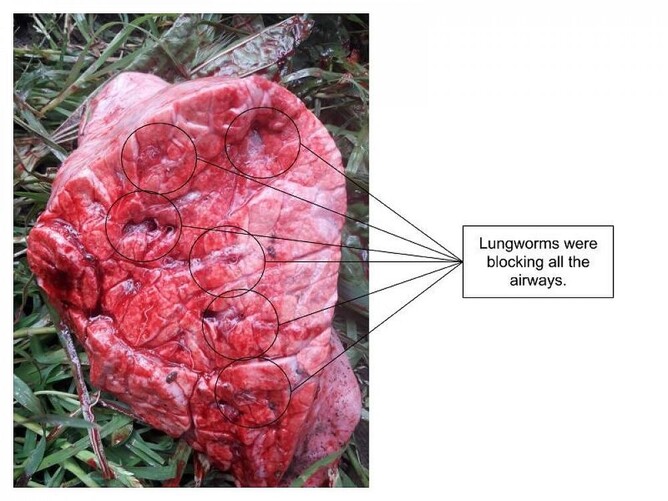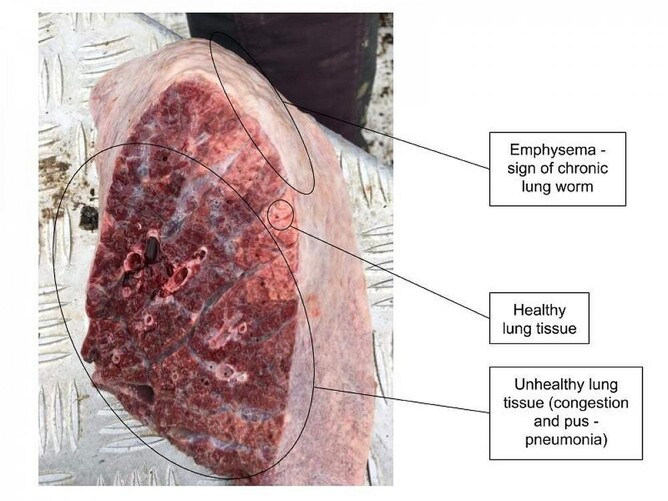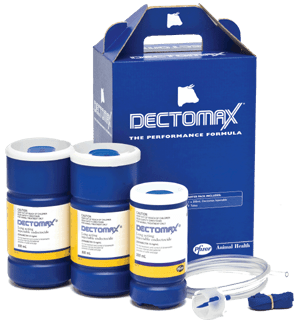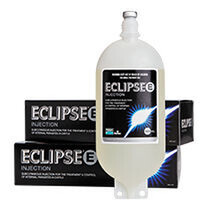Respiratory disease in youngstock is unfortunately never as cut and dry as we’d hope. There are many causes of coughing and breathing difficulties from pneumonia, calf diphtheria to lungworm. There are also many factors which influence the calves’ ability to fight disease; from trace elements, nutrition, disease status (e.g. BVD, IBR) to environmental challenges.
Lung disease can start early - in the calf shed. Pneumonia of dairy calves is a disease of young, housed calves. The cause of the disease is a combination of calf factors (poor colostrum management, dehydration and other diseases) and environmental factors (cold, damp and/or drafty sheds, poor hygiene, poor ventilation) in addition to viral/bacterial agents. Even though calves aren’t housed for long in Southland, the disease can still be an issue in drafty, damp sheds or in older calves in the paddocks. Stressors such as cold, damp days can be enough to allow the viruses to take hold in the lungs, as damp coats lower a calf’s resistance to infection.
Affected calves might cough and could be either bright and well with minimal discharge from their nose/eyes or they could be very sick. Early diagnosis, treatment and prevention is really important as once the calves are sick the damage to the lungs can be permanent, meaning the calves will continue to be susceptible to respiratory disease as they grow.
Necrotic stomatitis, which causes hard, round swellings on the side of the face can also cause coughing. Some affected animals will recover without treatment, however, others will go on to develop a soft cough,and become feverish and depressed. These swellings are caused by the same bacteria that causes foot rot and calf diphtheria, Fusobacterium necrophorum. In this disease, the bacterial infection is confined to the mouth and you might also see ulcers along with the swellings. The cough in these cases is caused by swelling of the tongue and other soft tissues of the mouth. As with most other respiratory diseases, it can also result in secondary bacterial pneumonia developing down the track, so early treatment of sick calves is important.
The other disease this bacteria causes is calf diphtheria. A little less common, this usually affects older, weaned calves. This disease occurs secondary to laryngeal friction caused by excessive vocalisation (as tends to happen at weaning) or frequent coughing (mild respiratory infections or exposure to irritants). This disease results in sick calves that really struggle to breath. If not treated, calves can suffocate to death so as with all respiratory diseases, early intervention is paramount! There are plenty of management factors which can be improved to reduce the incidence of this disease, so talk to your KeyVet now if this sounds familiar.
Lungworm - the most preventable respiratory disease is caused by the worm Dictyocaulus viviparus. The calves pick up the worm larvae from the pasture when eating, these then penetrate through the calves’ intestines, travel to the lungs, where they mature to adult worms and start producing eggs. The worms moving into the large airways cause the calves to cough, which moves the eggs from the lungs upwards to be swallowed by the calf. These eggs then hatch in the intestines and the first larval stages are passed in the faeces. It takes about a week from ingesting the larvae to the worms breaking out into the lungs, and another 2-3 weeks from this to mature adults producing eggs.
The worms invade the lungs, and can lead to both parasitic pneumonia and often secondary bacterial pneumonia when untreated. Healthy animals with low burdens can clear these infections within a few weeks. Infestation with this worm primarily occurs in calves younger than 10 months, but immune suppression could lead to disease outbreaks in older animals too. Losses can result from sudden death in severely affected animals and growth checks with animals losing up to 10% of their body weight with a lengthy recovery period to follow.
Often, we find dairy calves are the group of animals most affected by this disease. This is a result of them grazing the same paddocks year on year. Whilst only a small number of the worms survive from one season to the next, this is enough for the first batch of calves through the paddocks to pick up and multiply them. By the end of the season there is a huge burden of lungworm on the paddocks and the last calves to be moved through these paddocks are hit with a high challenge.
In summary, there are many factors to consider when you have an outbreak of respiratory disease in calves or youngstock. Weighing calves regularly is the best way to detect arising problems before they become too severe. Checks in growth can be caused by poor nutrition, inadequate trace elements, parasites or other underlying diseases such as BVD. All of these factors also reduce the immunity of calves, which then predisposes them to viral infections and/or increased parasite burdens (including lungworm). The earlier we can get a jump on disease and health problems in these calves, the sooner we can fix the problem and the less of an impact we have on the growth and future productivity of the calves.
Case 1:
Mob of 160 calves, drenched regularly.
- 3 sick calves, 2 bloated. All had a yellow snotty discharge from the nose, increased breathing rates and the sickest animal was open-mouth breathing.
- Pneumonia diagnosed on lung auscultation, all calves had a bacterial pneumonia, likely secondary to a primary viral agent.
- Bloating likely due to a secondary vagal indigestion (nerve damage causing bloating) due to the inflammation associated with chronic pneumonia.
- Calves recovered well after treatment with antibiotics and anti-inflammatories.
Case 2:
Mob of 140 ill-thrifty calves, long drenching intervals
- Poor growth and body condition in calves noted when ear notching, couple of calves hanging back and one death.
- Post mortem of the recently dead calf allowed definitive diagnosis in this case.
- Large number of lung worms present throughout the lungs with intestinal parasites also present.
- Calf died from severe lungworm infestation, due to insufficient drenching and poor paddock rotation.
Case 3:
Mob of 100 ill-thrifty calves, poor drenching history.
- Ill-thrifty calves, severe outbreak of coughing and breathing difficulties.
- Calves drenched a week ago but not prior.
- Several deaths in the last couple of days - post mortem exam revealed signs of chronic lungworm infestation, but few lungworms present due to drenching.
- 75% of calves had a bacterial pneumonia (high temps), likely secondary to chronic lungworm infestation and damage.
- Bloods revealed a selenium deficiency and exposure to BVD, so this combined with inadequate drenching led to chronic lungworm loads and an outbreak of secondary bacterial pneumonia
Recommended products:
